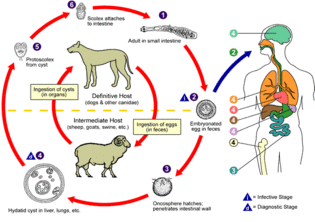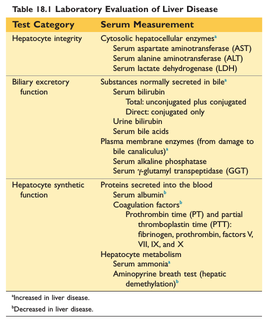Edited, memorised or added to reading queue
on 18-Nov-2021 (Thu)
Do you want BuboFlash to help you learning these things? Click here to log in or create user.
| status | not read | reprioritisations | ||
|---|---|---|---|---|
| last reprioritisation on | suggested re-reading day | |||
| started reading on | finished reading on |
Abraham Lincoln - Wikipedia
Reconstruction Presidential elections 1860 Convention 1864 Convention Assassination and legacy Assassination Funeral Historical reputation Memorials Depictions Bibliography Topical guide v t e <span>Abraham Lincoln (/ˈlɪŋkən/; February 12, 1809 – April 15, 1865) was an American lawyer and statesman who served as the 16th president of the United States from 1861 until his assassination in 1865. Lincoln led the nation through the American Civil War and succeeded in preserving the Union, abolishing slavery, bolstering the federal government, and modernizing the U.S. economy. Lin
Article 6971369590028
Life cycle of Echinococcus granulosus
#hyatiddisease #liver #surgery
https://web.stanford.edu/group/parasites/ParaSites2003/Echinococcus/lifecycle2.htm
| status | not read | reprioritisations | ||
|---|---|---|---|---|
| last reprioritisation on | suggested re-reading day | |||
| started reading on | finished reading on |
Life Cycle
Life Cycle life cycle The life cycle of Echinococcus is illustrated below (courtesy of DPDx)5: The life cycle of this organism outside of a human can be summed up in six stages: The adult Echinococcus granulosus, which is about 3-6 mm in length, resides in the bowel of its definite host. Gravid proglottids release eggs that are passed in the feces. These eggs are then ingested by a suitable intermediate host, including sheep, goat, swine, cattle, horses and camels. The eggs then hatch in the bowels and release oncospheres that penetrate the intestinal wall. These oncospheres then migrate through the circulatory system to various organs of the host. At the organ site, the oncosphere develops into a hydatid cyst. This cyst enlarges gradually, producing protoscolices and daughter cysts that fill the cyst interior. These cyst-containing organs are then ingested by the definite host, causing infection. After ingestion, the protoscolices evaginate, producing protoscolexes. The scolexes of the organisms attach to the intestine of the definite host and develop into adults in 32-80 days. The life cycle then continues in humans: Humans can become infected if they ingest substances infected with Echinococcus eggs. The eggs then release oncospheres in the small intestine. At these places, oncospheres migrate through the circulatory system and produce hydatid cysts. Note: The same life cycle occurs with E. multilocularis (1.2 to 3.7 mm) except for these differences: Definite hosts = usually foxes and canines Intermediate hosts = small rodents Larva
| status | not read | reprioritisations | ||
|---|---|---|---|---|
| last reprioritisation on | suggested re-reading day | |||
| started reading on | finished reading on |
Life Cycle
Life Cycle life cycle The life cycle of Echinococcus is illustrated below (courtesy of DPDx)5: The life cycle of this organism outside of a human can be summed up in six stages: The adult Echinococcus granulosus, which is about 3-6 mm in length, resides in the bowel of its defini
Article 6971401571596
Amoebiasis
#amoebiasis #infectiousdisease #liver #medicine #surgery
https://web.stanford.edu/group/parasites/ParaSites2003/Amebiasis/amebiasis.html
| status | not read | reprioritisations | ||
|---|---|---|---|---|
| last reprioritisation on | suggested re-reading day | |||
| started reading on | finished reading on |
| status | not read | reprioritisations | ||
|---|---|---|---|---|
| last reprioritisation on | suggested re-reading day | |||
| started reading on | finished reading on |
| status | not read | reprioritisations | ||
|---|---|---|---|---|
| last reprioritisation on | suggested re-reading day | |||
| started reading on | finished reading on |
| status | not read | reprioritisations | ||
|---|---|---|---|---|
| last reprioritisation on | suggested re-reading day | |||
| started reading on | finished reading on |
| status | not read | reprioritisations | ||
|---|---|---|---|---|
| last reprioritisation on | suggested re-reading day | |||
| started reading on | finished reading on |
| status | not read | reprioritisations | ||
|---|---|---|---|---|
| last reprioritisation on | suggested re-reading day | |||
| started reading on | finished reading on |
| status | not read | reprioritisations | ||
|---|---|---|---|---|
| last reprioritisation on | suggested re-reading day | |||
| started reading on | finished reading on |
| status | not read | reprioritisations | ||
|---|---|---|---|---|
| last reprioritisation on | suggested re-reading day | |||
| started reading on | finished reading on |
| status | not read | reprioritisations | ||
|---|---|---|---|---|
| last reprioritisation on | suggested re-reading day | |||
| started reading on | finished reading on |
| status | not read | reprioritisations | ||
|---|---|---|---|---|
| last reprioritisation on | suggested re-reading day | |||
| started reading on | finished reading on |
| status | not read | reprioritisations | ||
|---|---|---|---|---|
| last reprioritisation on | suggested re-reading day | |||
| started reading on | finished reading on |
| status | not read | reprioritisations | ||
|---|---|---|---|---|
| last reprioritisation on | suggested re-reading day | |||
| started reading on | finished reading on |
| status | not read | reprioritisations | ||
|---|---|---|---|---|
| last reprioritisation on | suggested re-reading day | |||
| started reading on | finished reading on |
| status | not read | reprioritisations | ||
|---|---|---|---|---|
| last reprioritisation on | suggested re-reading day | |||
| started reading on | finished reading on |
| status | not read | reprioritisations | ||
|---|---|---|---|---|
| last reprioritisation on | suggested re-reading day | |||
| started reading on | finished reading on |
 The adult Echinococcus granulosus, which is about 3-6 mm in length, resides in the bowel of its definite host.
The adult Echinococcus granulosus, which is about 3-6 mm in length, resides in the bowel of its definite host. Gravid proglottids release eggs that are passed in the feces.
Gravid proglottids release eggs that are passed in the feces. These eggs are then ingested by a suitable intermediate host, including sheep, goat, swine, cattle, horses and camels. The eggs then hatch in the bowels and release oncospheres that penetrate the intestinal wall. These oncospheres then migrate through the circulatory system to various organs of the host.
These eggs are then ingested by a suitable intermediate host, including sheep, goat, swine, cattle, horses and camels. The eggs then hatch in the bowels and release oncospheres that penetrate the intestinal wall. These oncospheres then migrate through the circulatory system to various organs of the host. At the organ site, the oncosphere develops into a hydatid cyst. This cyst enlarges gradually, producing protoscolices and daughter cysts that fill the cyst interior.
At the organ site, the oncosphere develops into a hydatid cyst. This cyst enlarges gradually, producing protoscolices and daughter cysts that fill the cyst interior. These cyst-containing organs are then ingested by the definite host, causing infection. After ingestion, the protoscolices evaginate, producing protoscolexes.
These cyst-containing organs are then ingested by the definite host, causing infection. After ingestion, the protoscolices evaginate, producing protoscolexes. The scolexes of the organisms attach to the intestine of the definite host and develop into adults in 32-80 days.
The scolexes of the organisms attach to the intestine of the definite host and develop into adults in 32-80 days. Humans can become infected if they ingest substances infected with Echinococcus eggs.
Humans can become infected if they ingest substances infected with Echinococcus eggs. The eggs then release oncospheres in the small intestine.
The eggs then release oncospheres in the small intestine.






